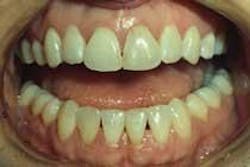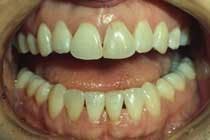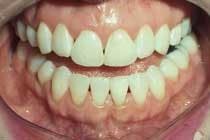Ask Dr. Christensen
by Gordon J. Christensen, DDS, MSD, PhD
In this monthly feature, Dr. Gordon Christensen addresses the most frequently asked questions from Dental Economics® readers. If you would like to submit a question
to Dr. Christensen, please send an e-mail to [email protected].
A full-arch impression made from a high-quality fixed prosthodontic or removable prosthodontic VPS costs more than $20 when made in a stock tray. Can these alginate-replacement VPS impression materials compete with the cost of alginate? A typical full-arch alginate impression made with a premium alginate product in a stock tray costs an average of about 90 cents, while a VPS alginate-replacement product for the same purpose costs from 2.5 to 4.5 times more than the alginate. This cost is obviously higher than alginate, but far lower than prosthodontic VPS products. Do the advantages of the VPS alginate replacement outweigh the additional cost?
We have already noted the advantages of VPS. What are the disadvantages? The disadvantages of VPS alginate replacements are: cost, bubbles in the impression if extreme care is not taken, separation from inadequately perforated trays or those lacking proper adhesive, and difficulty of separation from perforated reusable trays.
Alginate performs well when used properly, and it is doubtful that all dentists will abandon it. The advantages of alginate are: low cost, extreme hydrophilicity which minimizes bubbles in the mouth and also when being poured, ability to mix to any desired viscosity, and excellent accuracy when cleaned well by water spray and stored adequately before pouring. I suggest washing the impression well, drying it with an air syringe until it does not have a shine, placing it in a plastic sandwich “baggie” with a couple of drops of water, and pouring it as soon as possible.
To answer your question — I am still using alginate.
See our new video on alginate, alginate replacements, and the related techniques. It includes close-up demonstrations of the many steps in making alginate impressions often accomplished inadequately in most dental offices. It is an excellent in-service team education video.
For more information on V1927 “Alginate Impressions — Predictable and Accurate,” contact Practical Clinical Courses at (800) 223-6569, or visit our Web site at www.pccdental.com.
Q I continue to be confused by the significant advertising regarding the use of lights to increase tooth-bleaching potency. In contrast, I have heard in numerous dental continuing-education lectures that the lights do not increase the adequacy of bleaching. My patients have heard about light-activated bleaching, and they continue to request that technique. What is the most adequate bleaching concept today, what should I tell my patients, and what should I be using for tooth bleaching?A Your question is one of significant importance, since vital tooth bleaching is at an all-time high, and millions of people have had their teeth successfully bleached by many different methods. There is only one popular chemical that is currently used for bleaching teeth. That is hydrogen peroxide. Research has shown that the main difference in the ability of any technique to bleach teeth is the concentration of the hydrogen peroxide and the method of application of the hydrogen peroxide to the teeth.A full-arch impression made from a high-quality fixed prosthodontic or removable prosthodontic VPS costs more than $20 when made in a stock tray. Can these alginate-replacement VPS impression materials compete with the cost of alginate? A typical full-arch alginate impression made with a premium alginate product in a stock tray costs an average of about 90 cents, while a VPS alginate-replacement product for the same purpose costs from 2.5 to 4.5 times more than the alginate. This cost is obviously higher than alginate, but far lower than prosthodontic VPS products. Do the advantages of the VPS alginate replacement outweigh the additional cost?
We have already noted the advantages of VPS. What are the disadvantages? The disadvantages of VPS alginate replacements are: cost, bubbles in the impression if extreme care is not taken, separation from inadequately perforated trays or those lacking proper adhesive, and difficulty of separation from perforated reusable trays.
Alginate performs well when used properly, and it is doubtful that all dentists will abandon it. The advantages of alginate are: low cost, extreme hydrophilicity which minimizes bubbles in the mouth and also when being poured, ability to mix to any desired viscosity, and excellent accuracy when cleaned well by water spray and stored adequately before pouring. I suggest washing the impression well, drying it with an air syringe until it does not have a shine, placing it in a plastic sandwich “baggie” with a couple of drops of water, and pouring it as soon as possible.
To answer your question — I am still using alginate.
See our new video on alginate, alginate replacements, and the related techniques. It includes close-up demonstrations of the many steps in making alginate impressions often accomplished inadequately in most dental offices. It is an excellent in-service team education video.
For more information on V1927 “Alginate Impressions — Predictable and Accurate,” contact Practical Clinical Courses at (800) 223-6569, or visit our Web site at www.pccdental.com.
Q I continue to be confused by the significant advertising regarding the use of lights to increase tooth-bleaching potency. In contrast, I have heard in numerous dental continuing-education lectures that the lights do not increase the adequacy of bleaching. My patients have heard about light-activated bleaching, and they continue to request that technique. What is the most adequate bleaching concept today, what should I tell my patients, and what should I be using for tooth bleaching?A Your question is one of significant importance, since vital tooth bleaching is at an all-time high, and millions of people have had their teeth successfully bleached by many different methods. There is only one popular chemical that is currently used for bleaching teeth. That is hydrogen peroxide. Research has shown that the main difference in the ability of any technique to bleach teeth is the concentration of the hydrogen peroxide and the method of application of the hydrogen peroxide to the teeth.Click here to enlarge imageQ I have used alginate for many years, and have had acceptable success in normal usage. Recently, I have seen many advertisements for nonalginate products that can be used in place of alginate. How do these nonalginate products compare with alginate, and is there a major cost differential?A This question is highly pertinent, as we see a slow but continuing change in some practices from using alginate to nonalginate products. The nonalginate products such as AlgiNot™ (Kerr), Silgimix™ (Sultan), StatusBlue® (Zenith/DMG), and Position™ Penta™ Quick (3M ESPE) are vinyl-polysiloxane (VPS), a material similar to higher-cost VPS materials that many practitioners are using for fixed and some removable prosthodontic procedures. The positive characteristics of VPS when compared to alginate are: excellent accuracy, clean to use, no bowl to clean, no dust, no taste, no odor, and the ability to delay pouring or to make additional pours of the same impression.A full-arch impression made from a high-quality fixed prosthodontic or removable prosthodontic VPS costs more than $20 when made in a stock tray. Can these alginate-replacement VPS impression materials compete with the cost of alginate? A typical full-arch alginate impression made with a premium alginate product in a stock tray costs an average of about 90 cents, while a VPS alginate-replacement product for the same purpose costs from 2.5 to 4.5 times more than the alginate. This cost is obviously higher than alginate, but far lower than prosthodontic VPS products. Do the advantages of the VPS alginate replacement outweigh the additional cost?
We have already noted the advantages of VPS. What are the disadvantages? The disadvantages of VPS alginate replacements are: cost, bubbles in the impression if extreme care is not taken, separation from inadequately perforated trays or those lacking proper adhesive, and difficulty of separation from perforated reusable trays.
Alginate performs well when used properly, and it is doubtful that all dentists will abandon it. The advantages of alginate are: low cost, extreme hydrophilicity which minimizes bubbles in the mouth and also when being poured, ability to mix to any desired viscosity, and excellent accuracy when cleaned well by water spray and stored adequately before pouring. I suggest washing the impression well, drying it with an air syringe until it does not have a shine, placing it in a plastic sandwich “baggie” with a couple of drops of water, and pouring it as soon as possible.
To answer your question — I am still using alginate.
See our new video on alginate, alginate replacements, and the related techniques. It includes close-up demonstrations of the many steps in making alginate impressions often accomplished inadequately in most dental offices. It is an excellent in-service team education video.
For more information on V1927 “Alginate Impressions — Predictable and Accurate,” contact Practical Clinical Courses at (800) 223-6569, or visit our Web site at www.pccdental.com.
Q I continue to be confused by the significant advertising regarding the use of lights to increase tooth-bleaching potency. In contrast, I have heard in numerous dental continuing-education lectures that the lights do not increase the adequacy of bleaching. My patients have heard about light-activated bleaching, and they continue to request that technique. What is the most adequate bleaching concept today, what should I tell my patients, and what should I be using for tooth bleaching?A Your question is one of significant importance, since vital tooth bleaching is at an all-time high, and millions of people have had their teeth successfully bleached by many different methods. There is only one popular chemical that is currently used for bleaching teeth. That is hydrogen peroxide. Research has shown that the main difference in the ability of any technique to bleach teeth is the concentration of the hydrogen peroxide and the method of application of the hydrogen peroxide to the teeth.The most popular professional method is still carbamide peroxide (which breaks down into hydrogen peroxide and urea) or hydrogen peroxide alone, both of which are given to the patient by the dentist and delivered in fitted trays. Carbamide peroxide is the most popular chemical used for bleaching, and 15 percent is the most commonly used concentration. Without taking the space to discuss this subject in detail, I will summarize the research and observations on the use of carbamide peroxide in trays.
Most dentists use the 15 percent carbamide peroxide in 0.040-inch-thick flexible trays extending about 1 mm apical to the gingival line. The trays are placed in the mouth for 30 to 60 minutes per day for one week or slightly more. The longer the patient uses the technique, the lighter the teeth become to the point where minimal additional effect of the bleach can be observed. Use of the trays for long periods of time — even as long as six months — has been shown to remove very dark stains, such as tetracycline; however, we also know that few patients will tolerate using the technique for such long periods of time. Mild to moderate post-bleaching tooth sensitivity is observed in most home-bleaching situations, beginning about the third day of bleaching and becoming more acute if the patient does not stop bleaching for a few days. When bleaching is stopped for a few days, the sensitivity goes away and the patient can begin bleaching again.
In recent years, many dentists have been instructing their patients to use the following desensitizing technique after each bleaching session: Wash the peroxide solution from the trays. Blot the inside of the trays to remove the water. Place several drops of 5,000 ppm fluoride gel (such as PreviDent® from Colgate, Fluoridex™ from Discus, or ControlRx® from 3M ESPE) in the trays. Then, insert the trays again for about five minutes. This desensitizing technique has proven effective.
More recently, fluoride, potassium nitrate, or amorphous calcium phosphate has been added to the home bleaching gels by some companies (Discus, Ultradent), which appears to eliminate the need for a separate fluoride application. Further observation and controlled research is needed to fully validate the addition of these chemicals to the bleach.
Many companies are promoting in-office bleaching with solutions of hydrogen peroxide, ranging from 16 percent to 50 percent. Most recommend one hour of bleaching. Some apply the solution only once during the hour, and others recommend placing up to four applications in one hour. Most patients have sensitive teeth after these treatments. Desensitizing chemicals, and occasionally an analgesic, are needed after the treatments.
Some companies advocate using “bleaching lights or lasers” to allegedly accelerate the bleaching. Positive effects of the lights cannot be verified.
I personally congratulate Colgate and Ultradent for finally exposing the bleaching light myth. If you have not noticed, both companies have had recent ads stating that a light is not needed with their in-office products!
The best bleaching technique in 2008 should begin with the described in-office bleaching procedure, followed by the at-home technique. The patient should then be advised that the color of the teeth will become slightly darker over a period of months, and that “touch-up” bleaches at home will be needed. When doing “touch-up” bleaches, many of the over-the-counter bleaching products can be suggested, including Crest Whitestrips®.
Bleaching lights are not necessary or effective.
Dr. Christensen is a practicing prosthodontist in Provo, Utah, and Dean of the Scottsdale Center for Dentistry. He is the founder and director of Practical Clinical Courses, an international continuing-education organization initiated in 1981 for dental professionals. Dr. Christensen is a co-founder (with his wife, Rella) and senior consultant of Clinicians Report (formerly Clinical Research Associates), which since 1976 has conducted research in all areas of dentistry and publishes its findings to the dental profession in the “Gordon J. Christensen Clinicians Report” monthly newsletter. He is an adjunct professor at Brigham Young University and the University of Utah. Dr. Christensen has educational videos and hands-on courses on the above topics available through Practical Clinical Courses. Call (800) 223-6569 or (801) 226-6569.


